Mar 28, 2025
Mar 28, 2025
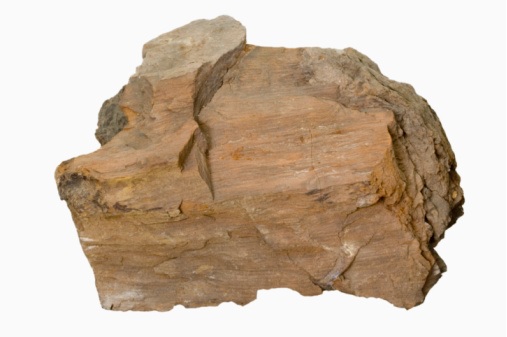
Image of Lignite (c) Gettyimages.com
People visit temples to repose their faith in God and seek wisdom, solace, bliss and enlightenment. I often say that the power plants are modern day temples because the light and energy generated by them hold key to happiness, growth and prosperity in the modern era.
Due to obvious reasons, the most of power plants world over are located away from the civil population. The majority of people enjoy the fruits of light and energy without even knowing the difficulties and hardship of those who are engaged in the generation, transmission and distribution of the electricity partly due to their skill or specialization and partly because of the compulsions of earning livelihood for self and their families.
The major fuel sources for electricity are fossil fuels like coal, lignite, gas and diesel in India. Besides nuclear material, water, wind, solar light, biogas etc constitute other important sources of energy. Depending upon the fuel source, the technology of the main equipment and allied systems also changes. A visit to any of the power plants would give a glimpse how innovative and enterprising have been human beings against odds in the evolutionary history to become masters of the universe.
Wood and other plant matters had decayed and transformed under pressure below the earth surface million years ago to form coal and lignite. Of this, lignite is of more recent origin compared to other forms of coal viz. bituminous and anthracite coals. Lignite has low levels of sulfur and ash content but high levels of volatile matter compared to coal.
Recently, I visited Neyveli Lignite Corporation Limited (NLCL) at Neyveli in Cuddalore district of Tamilnadu. They are using lignite as fuel in their power plants. Lignite is basically a low grade coal with less calorific value and high content of moisture and is considered a relatively cheaper source of fuel in India. The following photo feature illustrates my experiences with their mining operations and power plants
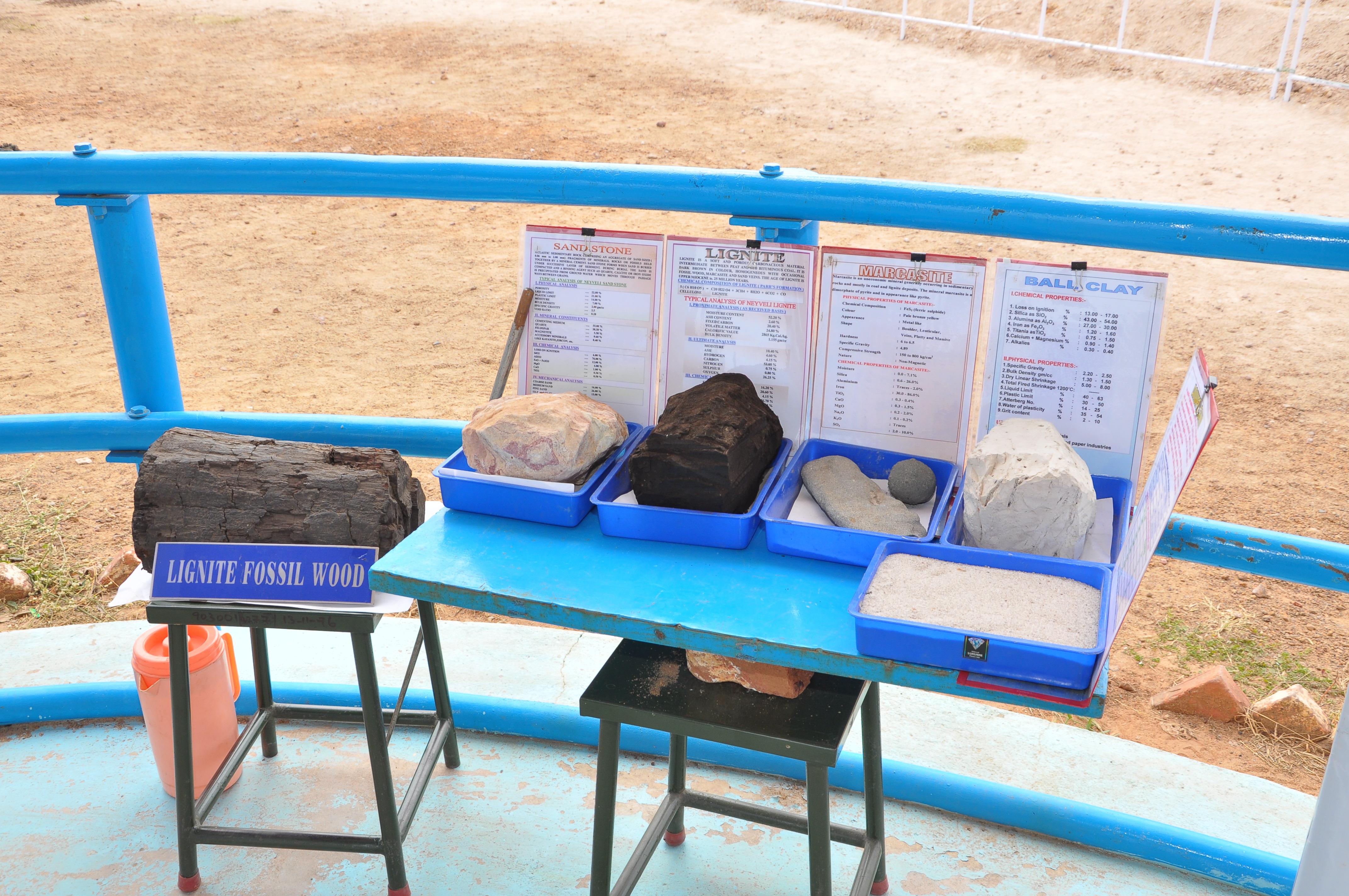
1. Samples of Lignite, Cuddalore Stone, Fossil Wood, Clay and Pebbles from the earth crust on display
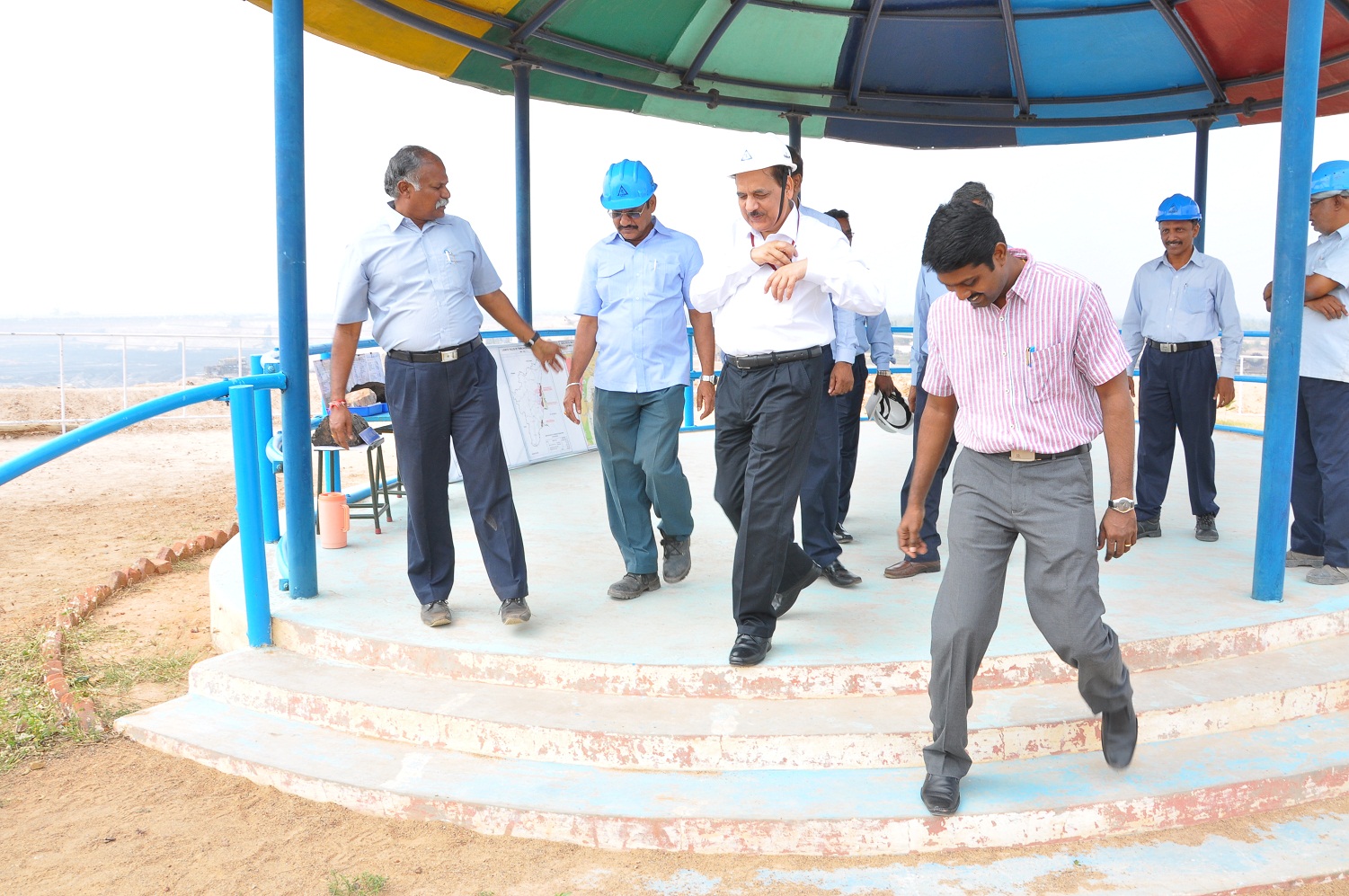
2. Author proceeding to the mining site after initial briefing about the geology and earth crust
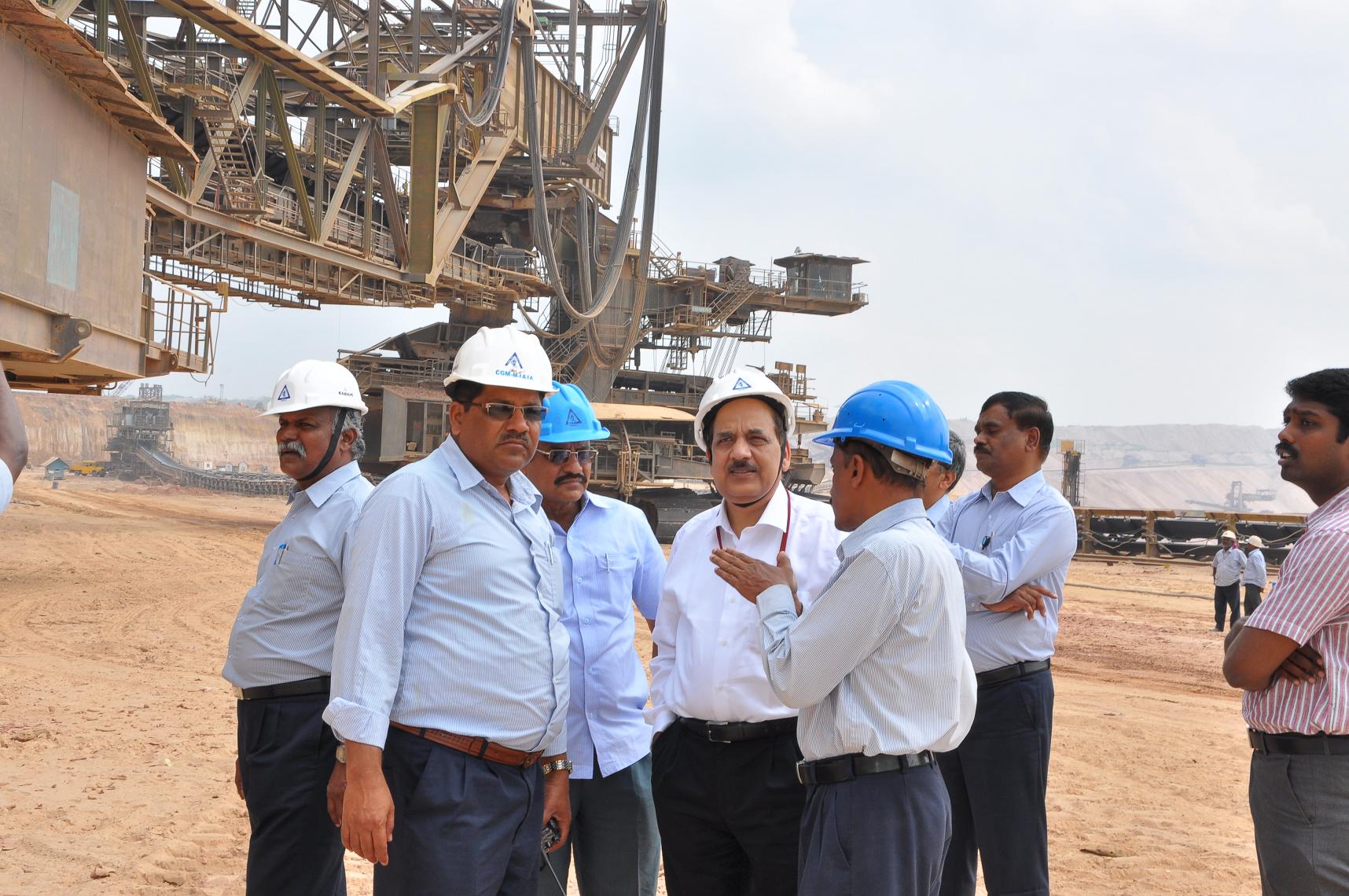
3. Author with the Officers of NLCL at the mining site with A huge Bucket Wheel Excavator in the background.
Lignite is also called the baby of the coal family and its opencast mines are located in Neyveli in Tamilnadu. Lignite mines have a very high ratio of the overburden to lignite at Neyveli including mainly clay and the Cuddalore sandstone which is hard and abrasive in nature. Besides, a layer of lignite fossil wood mainly from Miocene period is also abundantly found.This requires huge quantity of overburden to be removed during the mining operation. For illustration, about eleven tonnes of overburden is to be removed for mining of the one tonne of lignite.German excavation technology in open cast mining with huge Bucket Wheel Excavators, Conveyors and Spreaders is used for the lignite mining at Neyveli.
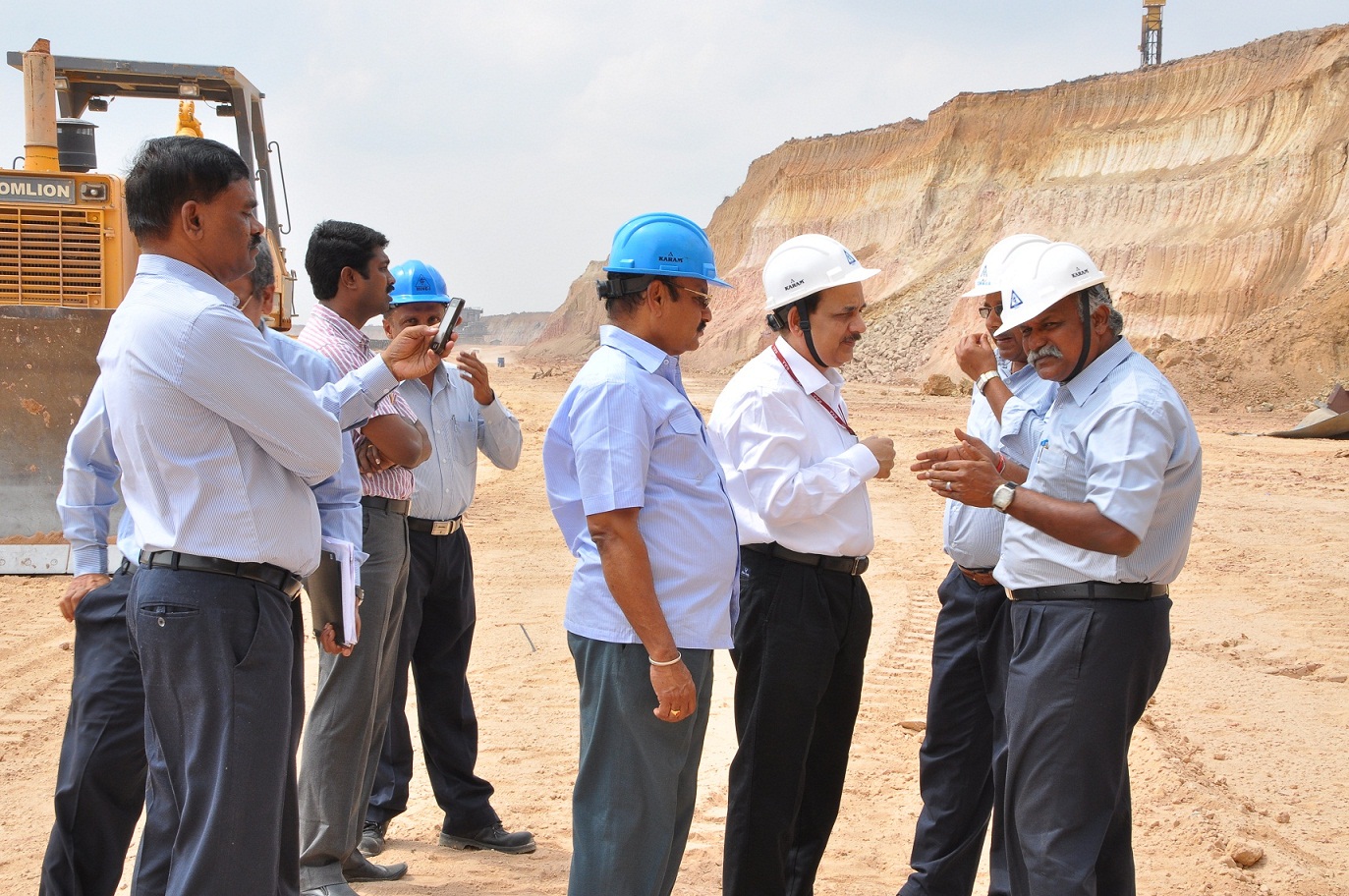
4. Author is brifed by the Executuve Director (Mines) about the mining operation at site
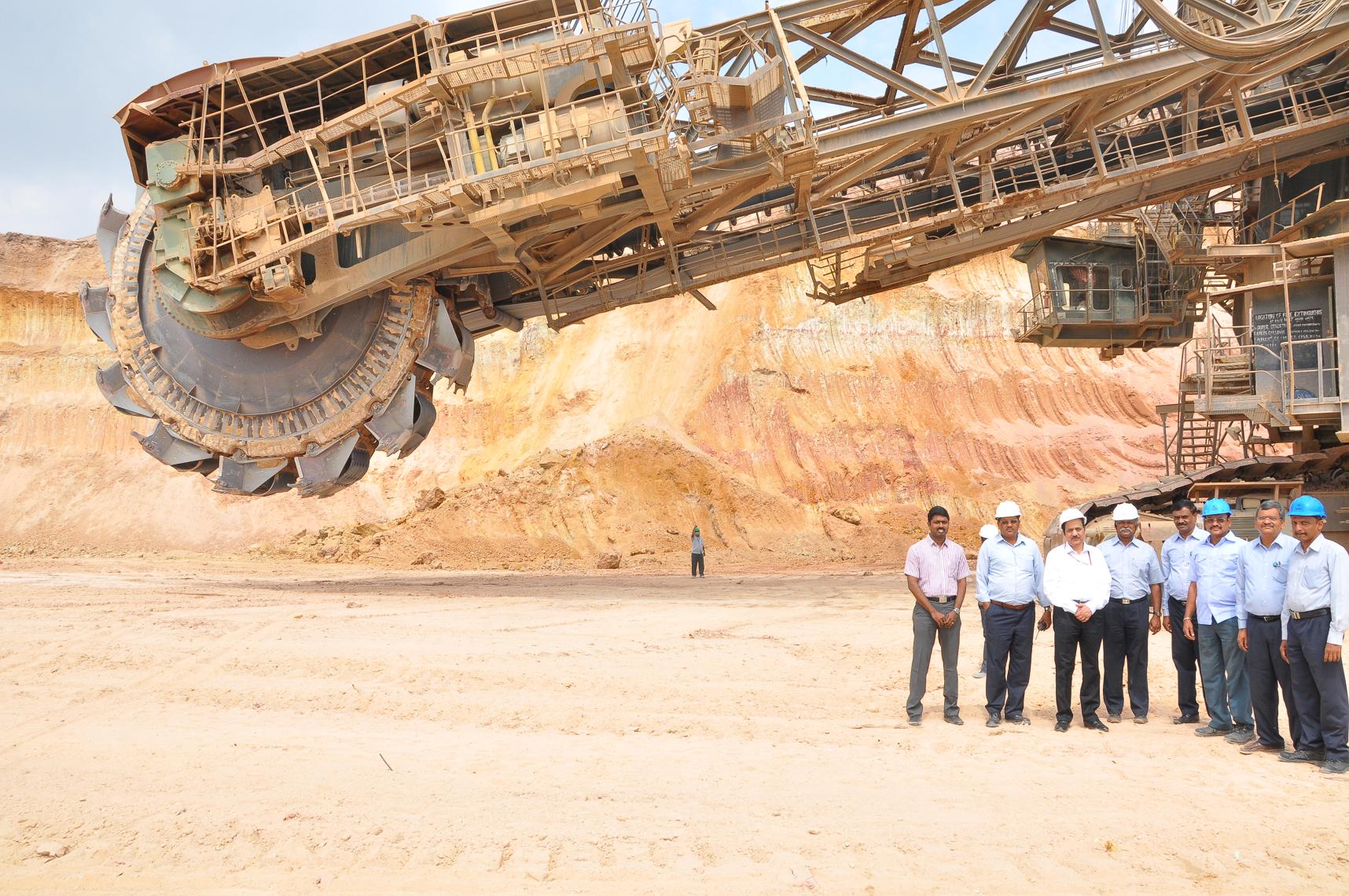
5. The excavator machine at work to remove overburden clearing lignite seams for extraction
High capacity excavators are used for handling large volume of overburden after forward preparation. To overcome the hard and abrasive layer of the Cuddalore stone, suitable modifications in the bucket wheel teeth of the excavators has been carried out followed by a systematic drilling and blasting programme. Conveyers and spreader machines are used for removing and piling overburden away from the site. Standard security drill makes it compulsory for every one wearing a helmet all the time while in the mining area and/or inside the power plant premises.
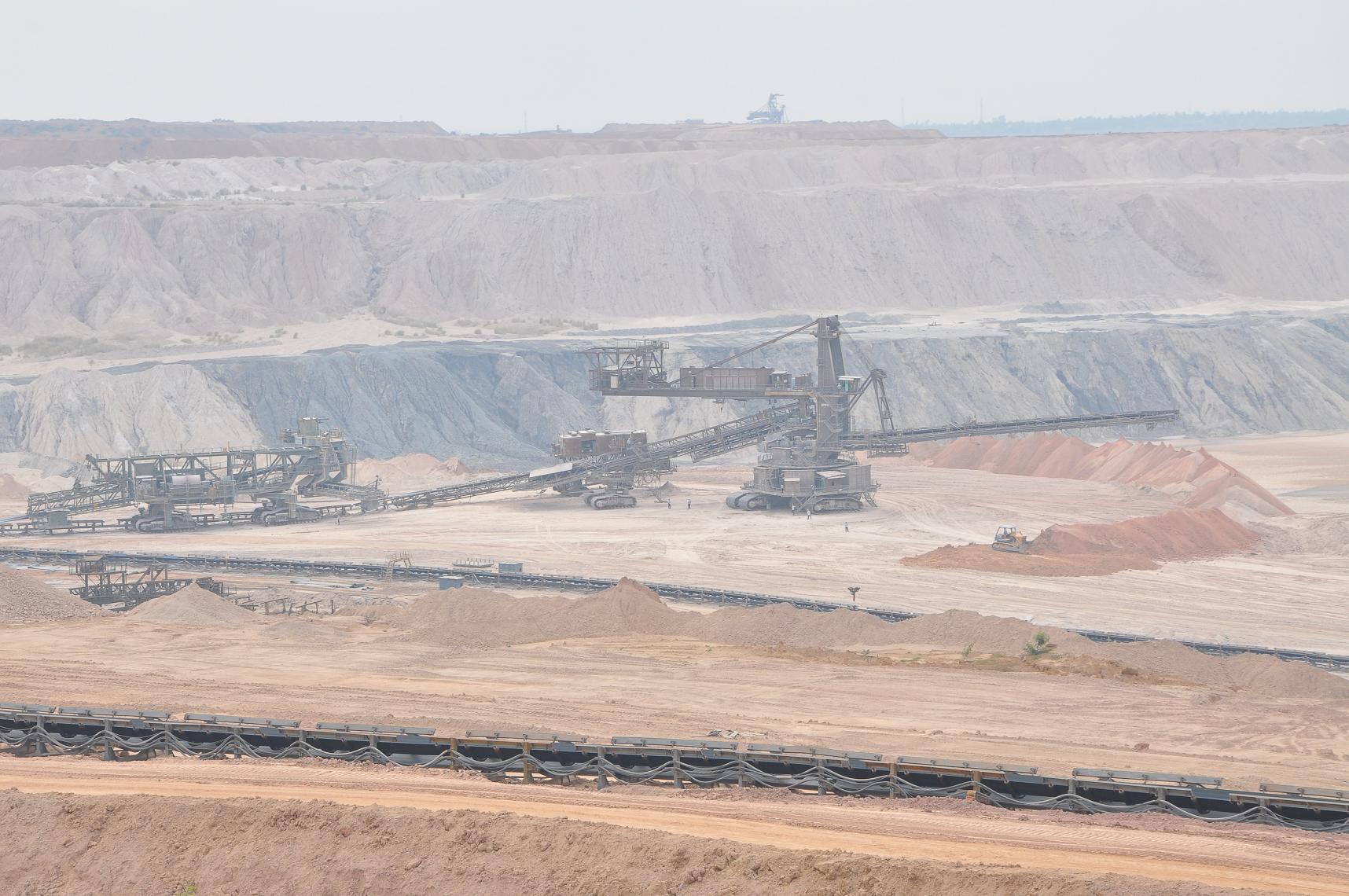
6. Crushed overburden is taken away on conveyer belts for piling away from the site
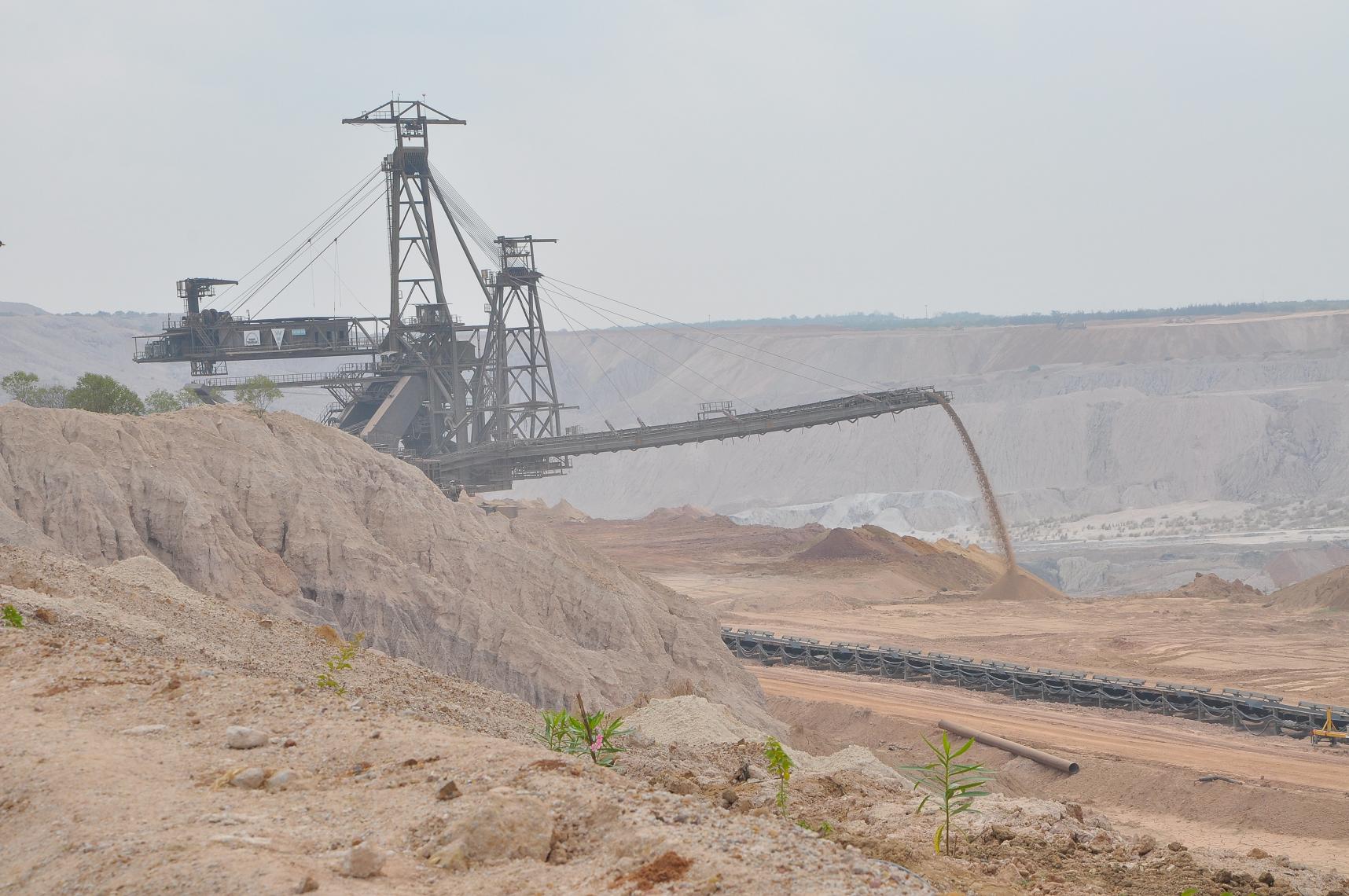
7. Overburden being discharged in a pile away from the mining site
Apart from the high ratio of overburden and hard overburdened strata, Neyveli lignite mines have another unique feature of the occurrence of a huge reservoir of ground water aquifer below the lignite bed. This water exerts a high pressure and unless the pressure is reduced before mining, it might burst the lignite seams and flood the mines. Hence the water is continuously pumped out round the clock through borewells located at the designated points. To contain the water pressure within reasonable limit, for every tonne of lignite more than twelve tonnes of water is pumped out.
Usually a power plant is located near a water source because it requires a huge volume of water in boilers for generation of steam and cooling purposes. There is such water pondage in the vicinity and the same ground water is used by the Neyveli power plants for their usage and remaining water is pumped out to nearby villages for irrigation and other purposes. The water level and pressure below the lignite seams is continuously monitored through observation wells to ensure proper ground water management.
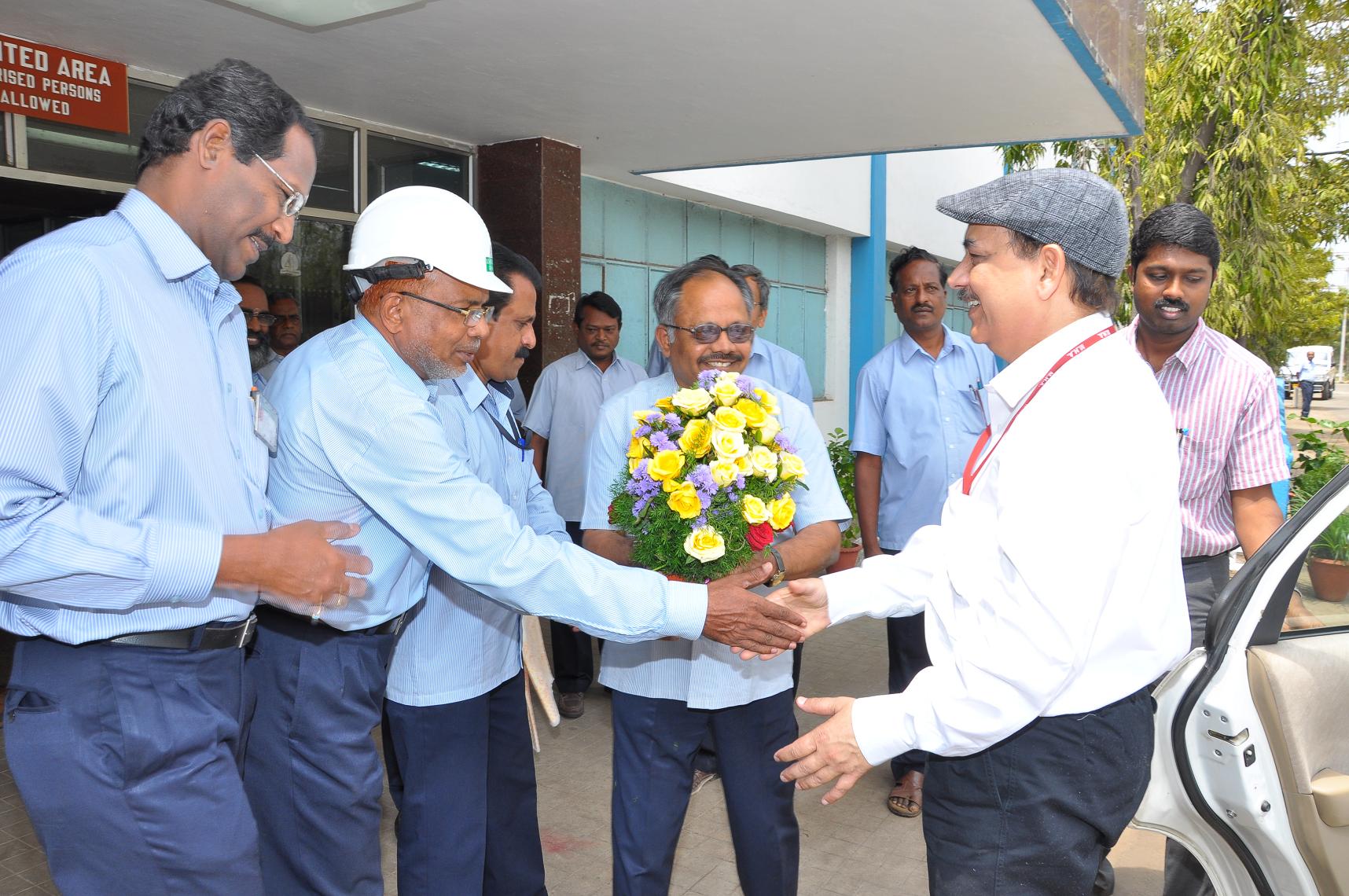
8. The author being received by senior officers at power plant
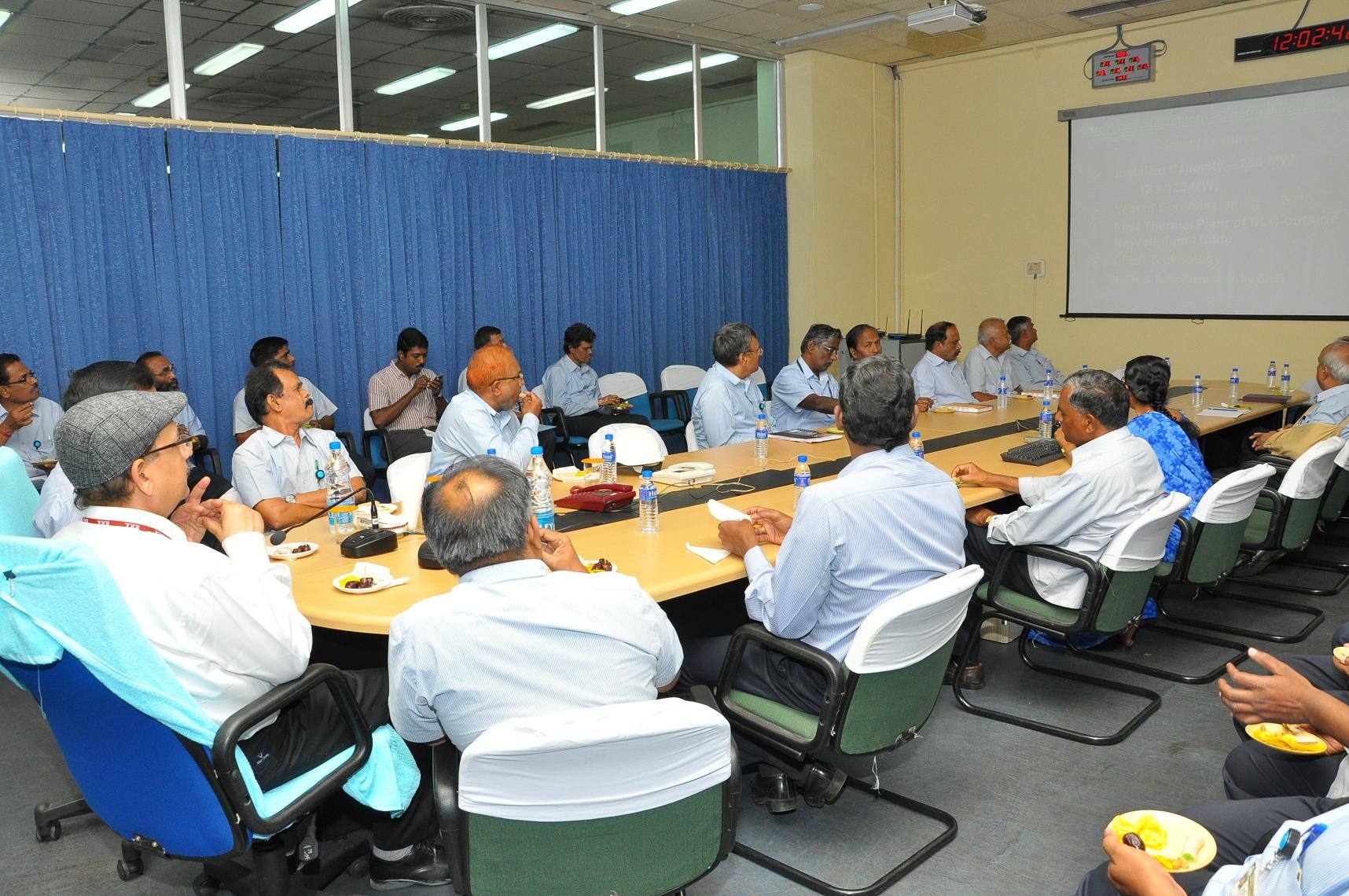
9. The author being briefed about the power plants and other activities of NLCL.
The total capacity of the lignite based power plants at Neyveli is 2490 Mega Watts. This mainly caters for the electricity needs of Tamilnadu, Andhra Pradesh, Karnataka, Kerala and Union Territory of Pondicherry. The corporation is also expanding its activities in states like Rajasthan and Uttar Pradesh by developing lignite and coal based power plants. They are also taking keen interest in corporate social responsibilities (CSR) activities through area development, environment protection, land conservation and creating medical and educational facilities for the local population in the surrounding villages.
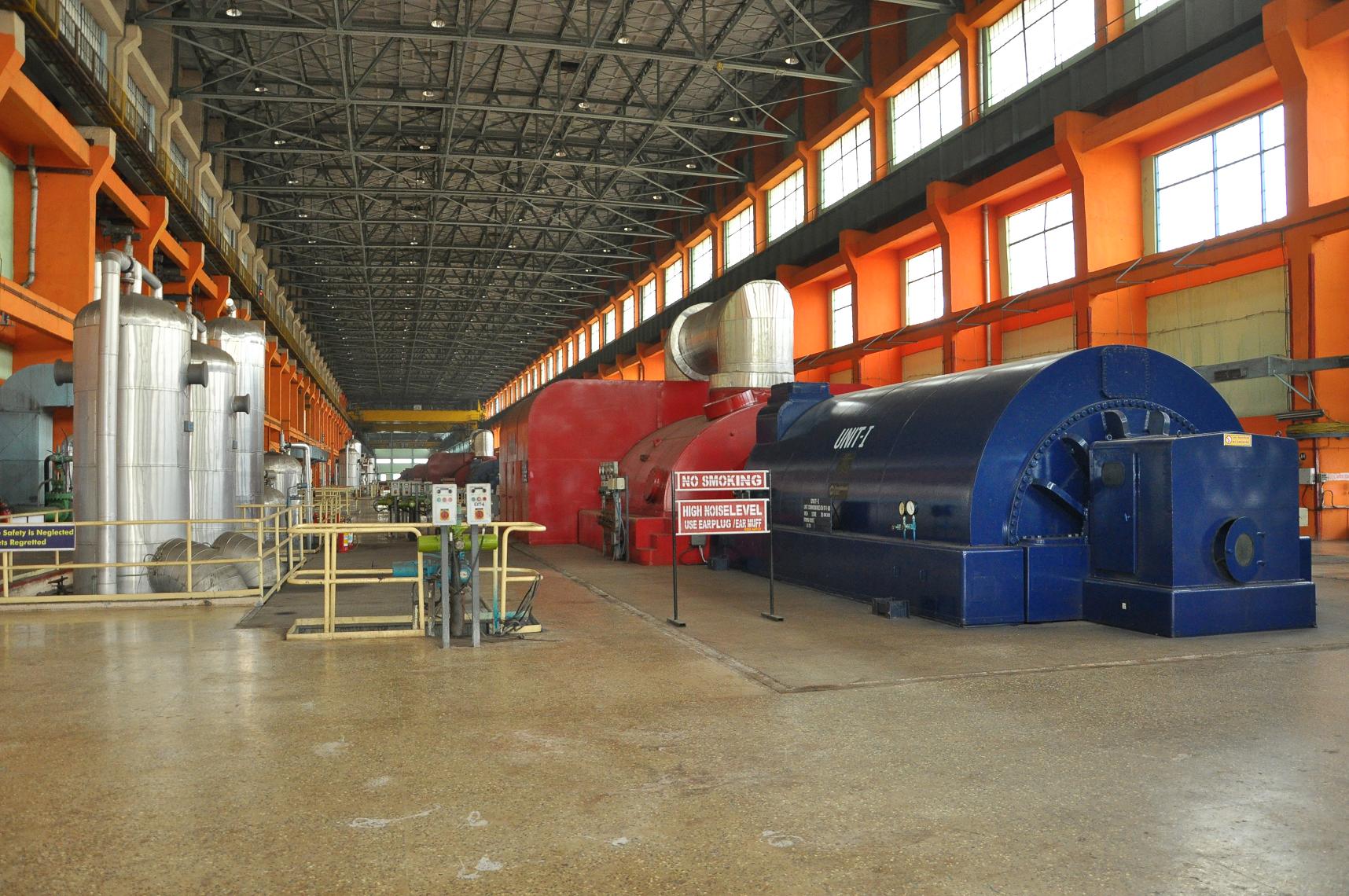
10. A view inside power plant showing the turbine and generator assembly on the right and boiler at the left, of the first unit.
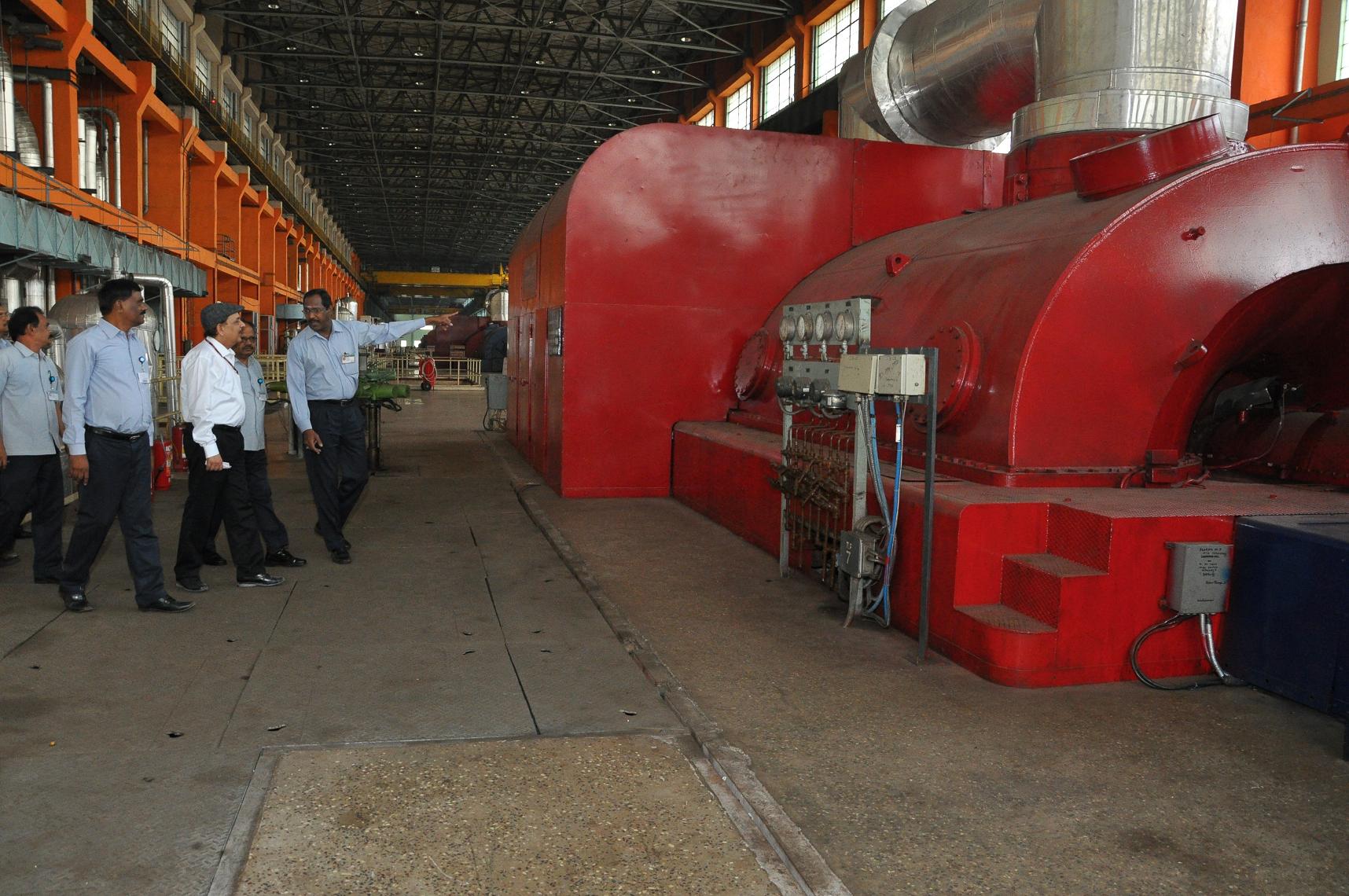
11. The author being briefed about the main equipment viz. boiler, turbine and generator of a unit and operation thereof
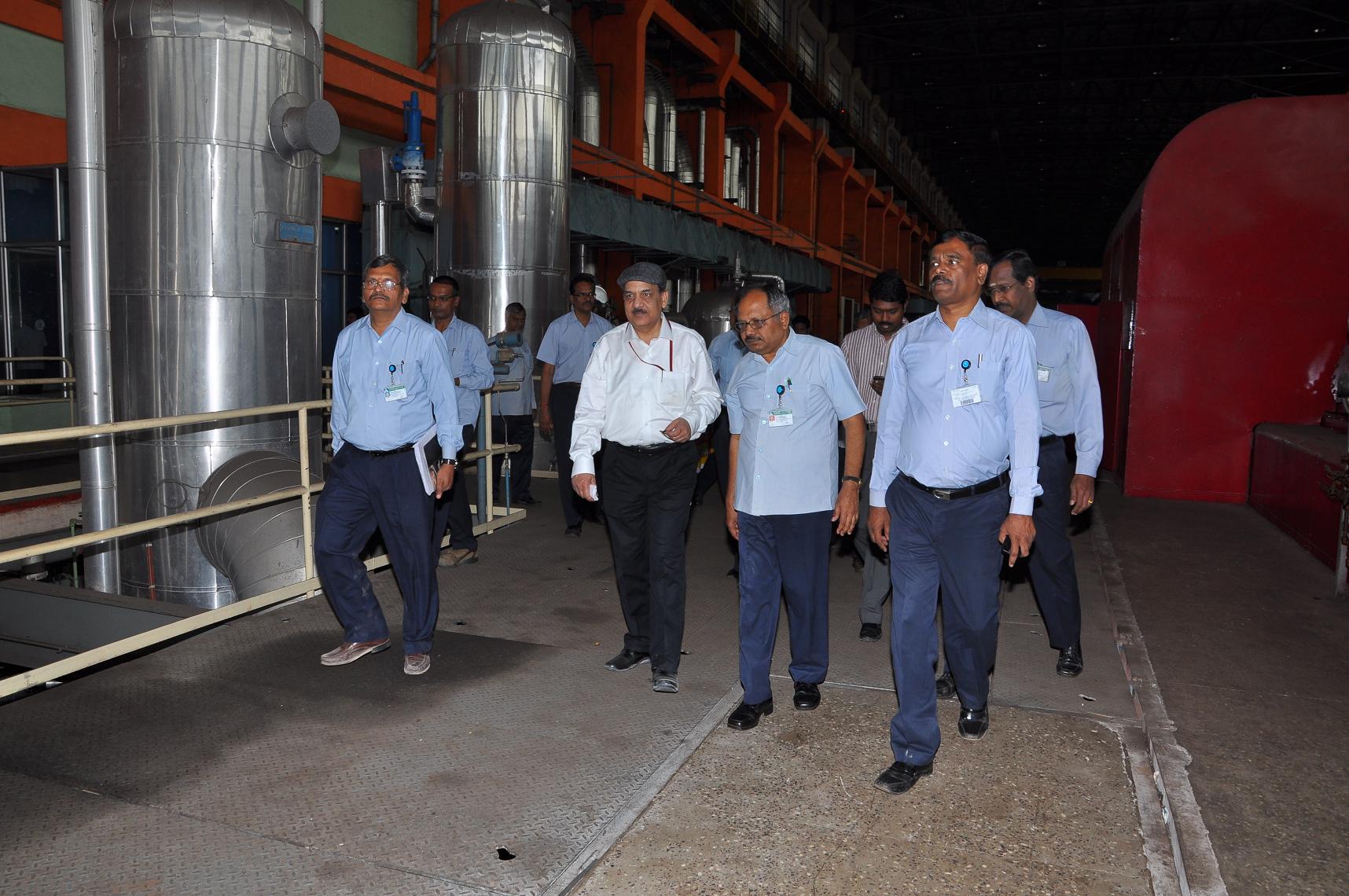
12. The author alongwith senior officers of NLCL visiting inside power station area to familiarise with the functioning thereof
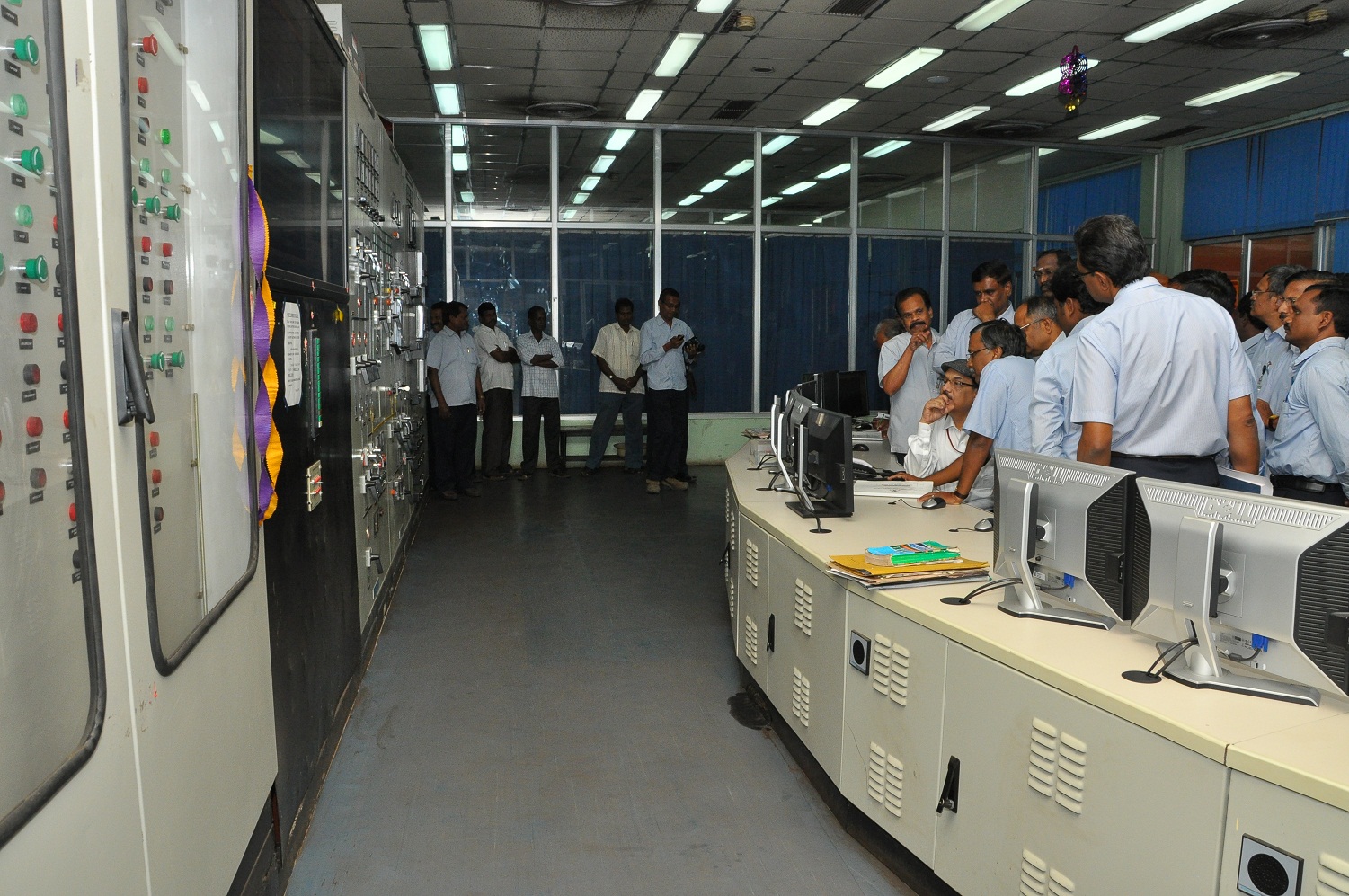
13. Author being explained how IT innovations have assured automated control and monitoring of the plant functioning and performance

14. The author leaving after the plant visit at the main entrance of the power station at Neyveli
Pictures 1 to 14 (c) jaipalsingh
22-Mar-2014
More by : Dr. Jaipal Singh

|
Kulbirji, Thank you so much. Lignite is an alternative energy source of fuel. |

|
Jaipal Sahib, Wonderful pictorial essay - thanks for enlightening us! |